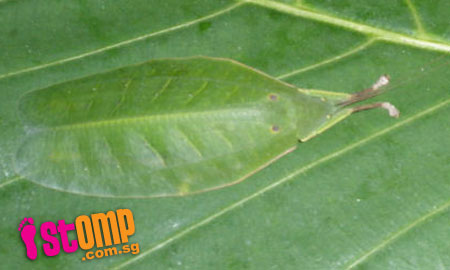
This mysterious leaf insect is able to camouflage itself with a Dillenia leaf found on Jurong Road, says STOMPer Arborist, who wonders what the insect's scientific name is.
Arborist was in awe when he spotted the insect rocking back on forth, disguising itself as a leaf blowing in the wind.
In an email, the sender says:
"I was walking along Jurong Road when I spotted this green leaf insect resting on a Dillenia leaf.
"The colour of the insect and that of the leaf was so similar that it was perfectly camouflaged.
"The mimicry was so good that even a predator would be fooled. The insect had a pair of long antennae, a green body and legs coloured green, brown and yellow at the end.
"The eyes were small and circular.
"When the insect was moving, it rocked back and forth , resembling a real leaf blown by the wind.
"When it jumped onto the road it turned dark green in colour.
"Could some entomologist tell me the name of this mysterious insect?"
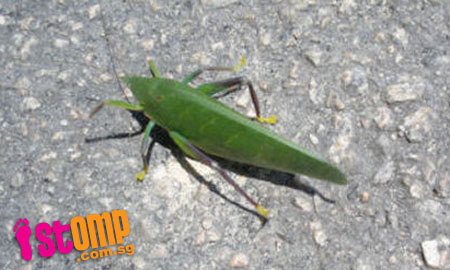


It's some sort of orthopteran; to be more specific, it's quite likely to be a species of katydid or bush-cricket (F. Tettigoniidae), although I can't narrow it down much further than that.
James encountered this species (or at least something very similar to it) in a visit to Dairy Farm Road last November.
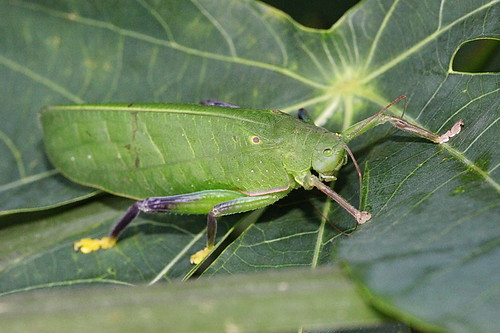
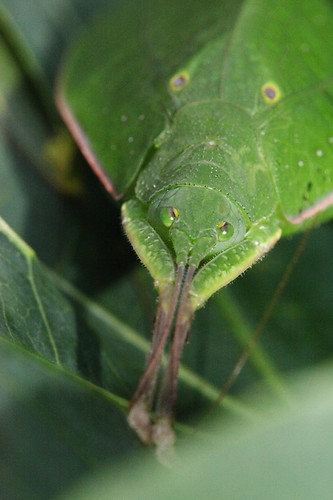
Marcus also found something similar at the Tree Top Walk last September.
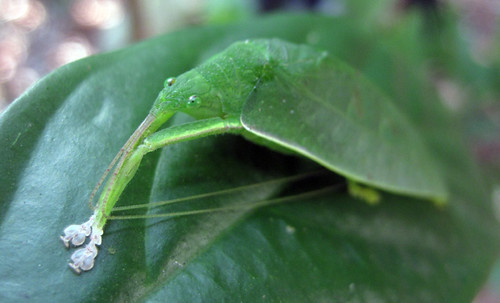
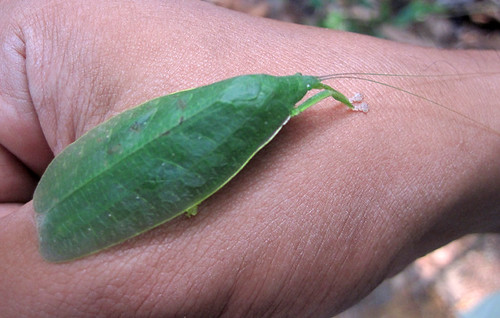
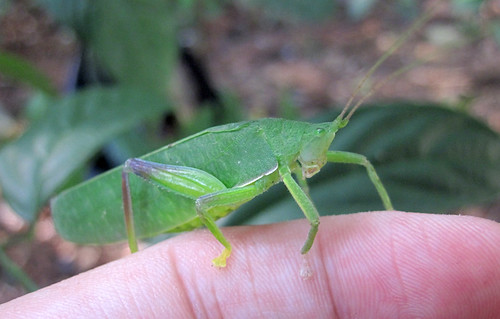
Many species of katydid are extremely well-camouflaged, bearing a very close resemblance to leaves. Most of the time, I notice the presence of these insects only when they move.

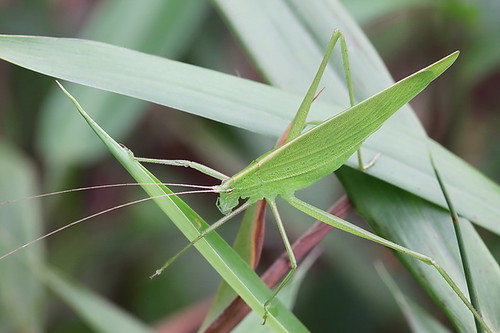
(Photos by James)
Here are 2 different species of katydid James and I found in a patch of secondary vegetation in Tampines. Can you find them?
'Leaf insect' is a misnomer, as it refers specifically to insects belonging to the family Phylliidae, which are found in tropical forests from Southeast Asia to Australia. Various species of the genus Phyllium may be encountered in the region.
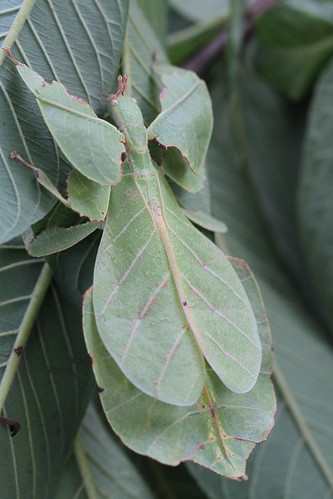
(Photo by crazysw)

(Photo by myrm)

(Photo by mantidboy)
The camouflage is exceptional.
Leaf insects are not commonly encountered in Singapore, although it seems that there are records from time to time.


Such as this individual spotted by Ria in Pasir Ris in 2003.
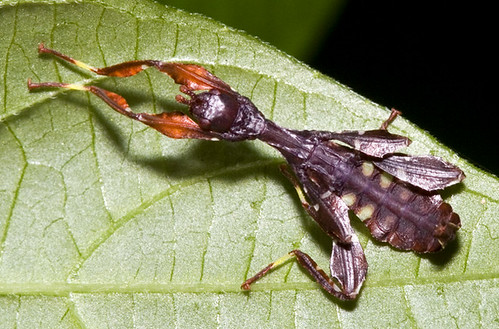

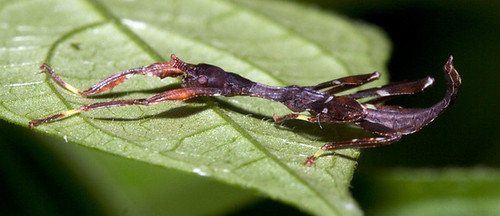
Marcus found this nymph of Phyllium siccifolium at Sungei Buloh in September 2007.
There is also a leaf insect photographed in Sime Forest in 2003 by Paul Huang.
Leaf insects belong to the Phasmida (also known as the Phasmatodea), which are known generally as stick insects. Like the leaf insects, stick insects are masters of camouflage.

Venus Drive;
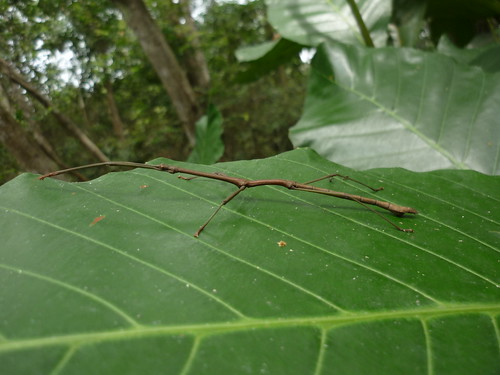
Pulau Ubin;
Here is a selection of stick insects photographed by various people in Singapore:
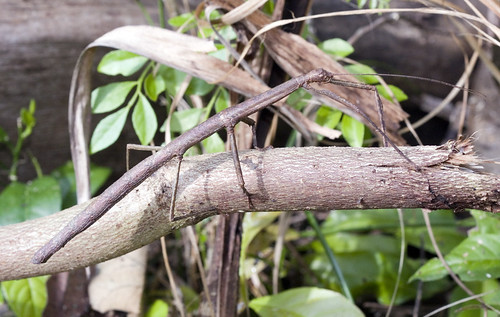
Pulau Ubin;
(Photo by Marcus)
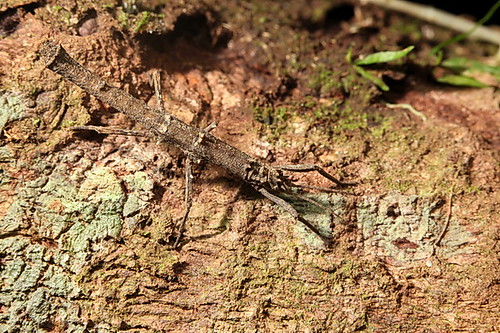
Lower Peirce;
(Photo by James)
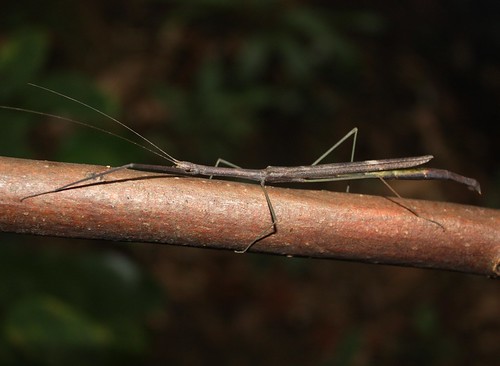
Bukit Timah;
(Photo by Shawn14595)

Lower Peirce;
(Photo by Jacqueline)
Grasshoppers and stick insects are somewhat closely related to one another; for one thing, both groups undergo incomplete metamorphosis, and members of both groups possess chewing mandibles. All stick insects are vegetarians, feeding on leaves, much like many orthopterans (there are some omnivorous or even predatory species of cricket and grasshopper).
There is another closely related group of insects famous for being masters of camouflage, but with a much more predatory slant - the mantids (Mantodea).
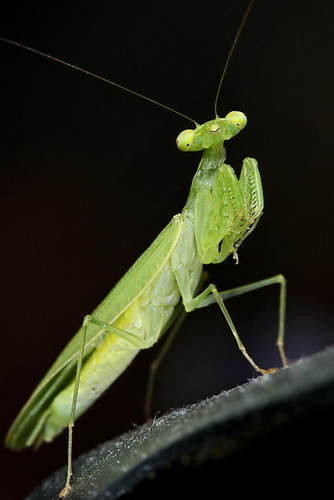
Tropidomantis tenera
(Photo by James)